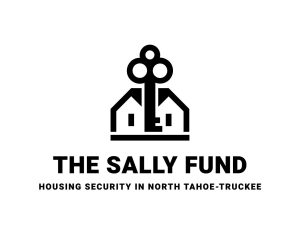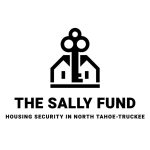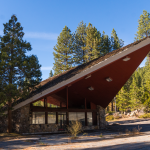What community land trusts do for housing in Tahoe
LAKE TAHOE, Calif./Nev. – Since 2003, St. Joseph’s Community Land Trust (SJCLT) has been a major player in providing housing on the south shore, ranging from partnering on Sugar Pine Village to tackling “missing middle” housing to preserving homes for long-term local renters. But what exactly does a community land trust do? And how can the north shore tap into the power of the model?
What is a community land trust?
Lyn Barnett, founder of SJCLT, was inspired to form a community land trust after attending a panel at a planning conference in Denver. Issues with affordable housing were already beginning to rear their head in 2002, and now SJCLT has been one of the longstanding housing entities present in the basin.
Community land trusts have been a model for preserving housing since the 1930s, but trace their history back to roots in land practices for Indigenous tribes of the Americas, pre-colonial Africa, Chinese economic systems and rural villages in India.
These trusts are run by nonprofits who hold land and steward the properties created on them. By leasing to community members at affordable prices, they create permanently affordable housing that also allows the homeowners to build equity and wealth.
People in the community support the nonprofit and local status of these kinds of land trusts—since profit isn’t their primary goal, it provides a perspective that is oriented towards housing locals.
A major goal of community land trusts as stated by the California Community Land Trust Network is to ensure perpetual affordability, stewardship and community control of land and housing.
How do they achieve those goals?
SJCLT executive director Jean Diaz explained that the nonprofit is responsible for several different programs that help provide housing.
Deed restriction is one of their primary mechanisms. While many municipalities have them, they usually have time limits. On the other hand, community land trusts retain permanent ownership and can make stipulations on affordability in their ground leases—effectively functioning as a permanent deed restriction. And the ground lease payments are about $50 a month, which is far more affordable than typical properties in the region. SJCLT also keeps an eye on these properties more closely, which prevents violations of deed restrictions.
The Riverside Homes project demonstrates the effectiveness of SJCLT in building missing middle housing. South Lake Tahoe sold the lots to SJCLT for $1, and the nonprofit was able to build homes for those with moderate income, at about 120% of the area median income. The ground leases for the properties last 99 years and contain a resale restriction. The home can be sold at any time, but the price must be affordable at that time.
Another mechanism is their monitoring programing. SJCLT has a project and stewardship manager whose job it is to maintain ongoing contact with homeowners. They track insurance, repairs and review improvement plans to ensure that affordability is maintained. That ongoing contact allows them to steward the homes within the community, rather than outsourcing to larger property management companies.
SJCLT also partners with projects such as Sierra Gardens and Sugar Pine Village, which serve lower income levels. Working with a nonprofit opens these projects to other kinds of funding, which help the projects come up faster and at less cost to other partners.
Lastly, one of their newest focuses is the Tahoe Affordable Homeownership Enabling program (TAHOE), aimed at helping long-term locals buy homes or stay in their existing homes. Recently, it allowed 11-year tenants to maintain their home after the owner decided to sell.
The mortgage package was specifically designed for community land trusts by Christine Doolittle of Newrez Home Loans, which allowed the tenants to purchase the property. SJCLT provided $100,000 to the down payment and rehabilitation of the home and maintain a ground lease on the property.
“It was a good time to launch the TAHOE program because of the rising costs, not just of new construction but preserving home stock,” said Diaz. “We’re trying to figure out organizationally how to tackle this affordability issue.”
South Lake Tahoe also shoulders much of the responsibility for housing people on the south shore, something Diaz recognizes. “People who benefit from our work may work elsewhere in the basin.”
“Participation in community groups is vital,” said Diaz, who also is on the Tahoe Living Working Group (TLWG), which advises the Tahoe Regional Planning Agency’s (TRPA) work on housing. “And there is a growing recognition that the CLT model is one of the available tools with unique benefits.”
On the north shore
Because of South Lake Tahoe’s status as a city and its commitments to housing, as well as the costs of housing, Diaz says that their strategic focus has been on the south shore. Having a city that is involved with housing also made it easier to advocate for different things such as the lots for the Riverside homes. But SJCLT recognizes that there are opportunities for the model to work on north shore.
Diaz was part of a team last year and earlier this year to explore the viability of community land trusts in the north shore. “It’s much, much more expensive there with the cost of land and construction,” said Diaz. “And we would love to find a way to extend what we do there.”
He recognized during the team conversations that there are many pots of money available for affordable housing in the north shore, and hoped there would be investment from players like the Tahoe Truckee Community Foundation (TTCF).
Up in northern Tahoe, the Tahoe Housing Hub has considered the community land trust model, and their recent addition of a 501(c)(3) organization follows some of the concepts.
Erin Casey, CEO and president of the hub, was interested in the community land trust model and the ability to own land, rent units, as well as purchase and preserve existing units. But because of their current existing governance structure as a 501(c)(4) that would be shared with their nonprofit through an agreement, it would make more sense to take elements from the model instead.
“We have components of it, but we’re trying to be more diverse in other ways as well,” said Casey. “We feel we can achieve the same thing.” Some of the key things that were identified while discussing the community land trust model was the notion of deed restrictions and having an entity that owns and manages housing.
Additionally, Diaz and Casey both noted that the north shore has more jurisdictions and government agencies to contend with, as well as different housing elements and goals throughout the region. But Casey says they’re accustomed to working in that environment.
“It’s more work, but it is possible to bring people together,” said Casey, who also advocated for customizing the approach depending on where things were at. “We have to put a lot of effort into those partnerships, but they offer a lot of opportunity.”
Tahoe Housing Hub’s approach
While programs like the Workforce Housing Preservation Program and Launchpad in Placer County exist, Tahoe Housing Hub is trying to fill a niche by focusing on rental property acquisition and management.
“For us, right now, property acquisition is a huge opportunity, and it’s less expensive than building brand new,” said Casey. There are also capital stacks that could be leveraged for buying these buildings and keeping them available for local workers.
Casey has previously expressed concern over the loss of naturally affordable properties and long-term rentals that are bought as speculative investments. “We haven’t considered what we’ve lost. Raising rents displaces tenants and there’s a need for rental properties as part of the trajectory of Tahoe life,” she said. “There are seasonal workers, people who may need to rent, people who aren’t ready to buy who want safe and dignified housing.”
Acquisition also works as a strategy that addresses the concerns about development, especially on the north shore where small-scale housing has been more palatable. By preserving currently existing housing for local workers, it helps with regional housing need goals while not solely relying on new construction.
Having an entity that helps with both property management and maintaining affordable rents is a big part of the mission for their new 501(c)(3), and they are partnering with EAH Housing, which is another nonprofit that has expertise in naturally occurring affordable housing and property management.
Casey also wants to improve the properties they acquire to make the living experience for their tenants better—for example, improving the landscaping of some of these older properties. “Ensuring dignified housing and a quality of life for people moving in is vital,” she said.
Funding sources
As Tahoe Housing Hub has continued to vet this concept, they’ve acknowledged that it does require quite a bit of funding—but they’re looking to state and federal funds in capital improvement, as well as local grant programs. “A lot of businesses do want to contribute to housing,” said Casey, and referenced Cal Neva’s desire to provide housing for their workers. She feels like local incentives will be successful in funding these kinds of housing endeavors in the future.
For SJCLT, much of their funding has come from their projects. They also accept donations from individuals and corporations, as many nonprofits do. “We’re always looking to generate sustainable revenue for the organization,” said Diaz. By the end of this year, they’re looking to get an endowment fund from the Tahoe Community Foundation, which would provide a long-term source of funding—vital for continuing their work into the future, which includes consideration of mixed-income housing projects and continued use of modular units.
While Tahoe Housing Hub’s programs are looking at the missing middle and SJCLT is tackling affordability across the spectrum, community land trust models play a key part in ensuring more local voices are heard in housing spaces.
Eli Ramos is a reporter for Tahoe Daily Tribune. They are part of the 2024–26 cohort of California Local News Fellows through UC Berkeley.

Support Local Journalism

Support Local Journalism
Readers around the Lake Tahoe Basin and beyond make the Tahoe Tribune's work possible. Your financial contribution supports our efforts to deliver quality, locally relevant journalism.
Now more than ever, your support is critical to help us keep our community informed about the evolving coronavirus pandemic and the impact it is having locally. Every contribution, however large or small, will make a difference.
Your donation will help us continue to cover COVID-19 and our other vital local news.









